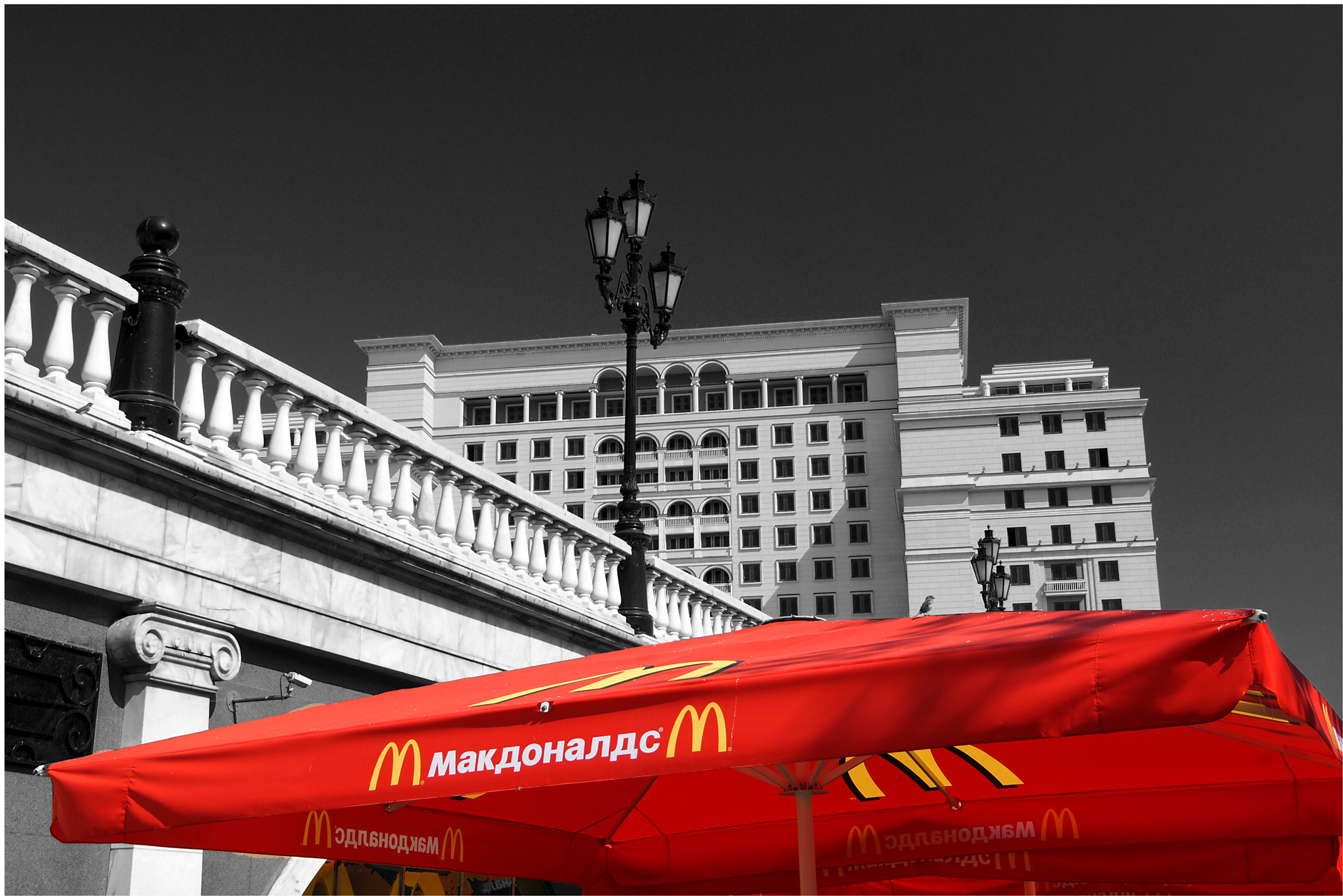McDonald’s closure marks ending of Russian era started by a Canadian 32 years ago

Memory can be fuzzy. I remember a bright, crisp winter day. Photographs tell me the sky was the more usual Moscow grey, with puddles on the pavement suggesting it might have been raining shortly before
Where memory and pictures agree is that a crowd of thousands of patient Muscovites had come early that morning to Pushkin Square, one of the most iconic places in the Russian capital, to get a taste of a McDonald’s burger.
It was Jan. 31, 1990. Russian journalists, foreign correspondents like me, and even a few diplomats had joined the impatient crowd, not wanting to miss the opening of the first ever McDonald’s restaurant in what was still the Soviet Union. A few dozen policemen had been dispatched in case the crowd got out of control.
“Reporters gathered around George Cohon, the 52-year-old Canadian who had taken the initiative to bring American fast food to Russia“Reporters gathered around George Cohon, the 52-year-old Canadian who had taken the initiative to bring American fast food to Russia. The rumour was that McDonald’s had avoided the country for political reasons, preferring to let the operator of its franchises north of the U.S. border take the first step. Cohon explained how he had toured Soviet farms – which were still mostly inefficient, and all under state ownership – to find suitable cows to turn into beefburgers. He also imported a special variety of potato, to be grown in Russian fields, which would make the right kind of French fries.
Reporters feverishly scribbling down these details knew they had a significance beyond ordinary Russians’ appetite for all things American, or their eagerness to devour burgers and Big Macs when the restaurant opened at 10 a.m.
For locals and foreigners alike, the opening was the first physical confirmation, just two months after the fall of the Berlin Wall, that USSR President Mikhail Gorbachev was serious, if incoherent at times, about economic and political reform. The golden arches signalled that democratisation and liberalisation were irreversible. The proof was in the eating of a Big Mac.
More than three decades later, history has gone into reverse. McDonald’s said this week it would close its 850 restaurants in Russia, arguing it could not ignore the “needless human suffering” caused by Vladimir Putin’s invasion of Ukraine. The Chicago-based company said the closure was temporary, though this seems more of an expression of hope than a plan. McDonald’s said it would still pay its 62,000 Russian employees but acknowledged that it was “impossible to predict when (the restaurants) might be able to reopen.”
McDonald’s no longer has the same scarcity value. Russian diners could until recently get their fast food from a range of outlets including KFC, pizza purveyor Papa John’s , and Burger King, among others. Several of those have now halted their operations or stopped investing in Russia, while coffee chain Starbucks has also shut its doors.
Yet for those with longer memories McDonald’s still has symbolic relevance. It was the first major international brand to set up shop in Moscow. Pizza Hut followed a few months later. At the time the USSR had less than two years to live, but it was still hard to imagine that Russia would enter a wild decade of unruly privatisations, that a new caste of oligarchs would take over the country’s mineral resources, or that foreign investors would flock to the Russian capital in search of hefty returns.
In 1990, most Russians were forbidden from holding foreign currencies, so McDonald’s priced its burgers in the non-convertible rouble. The downside was that a Big Mac cost between 2% and 3% of the average Russian’s monthly salary. The equivalent bill in the United States today would be $60.
The price wasn’t a deterrent, though, and McDonald’s served more than 30,000 meals that first day. The Big Mac was not just an exotic food but a taste of the United States, whose brands had been a subject of fascination and envy, and of active black-market trading, in the grim years of the Soviet Union.
The fast-food chain signalled that Russia was joining the globalising world economy, where Russians were at last allowed to travel. A few months before the opening, citizens had congregated in Pushkin Square to use their new-found freedom to demonstrate and express their impatience at the slow pace of reform. Opening a McDonald’s could almost be seen as Gorbachev’s reply to the protesters: See how real all this is.
Today the rapid departure from Russia of Western brands from Apple to Zara, combined with the domestic clampdown on citizens’ remaining liberties, shows that none of it was irreversible. These days Pushkin Square is one of the places that the Russian police clears of demonstrators protesting the war in Ukraine. Memories of 1990 are rapidly growing fuzzier.












